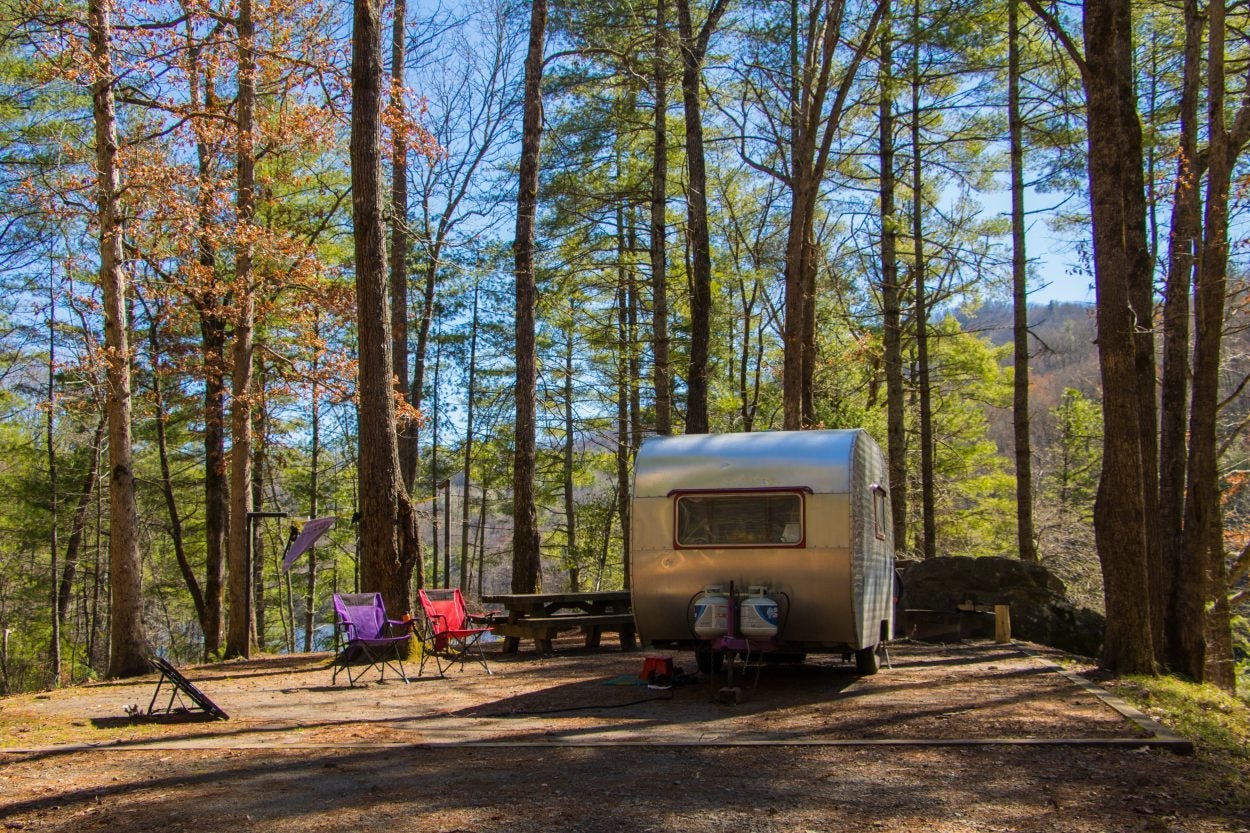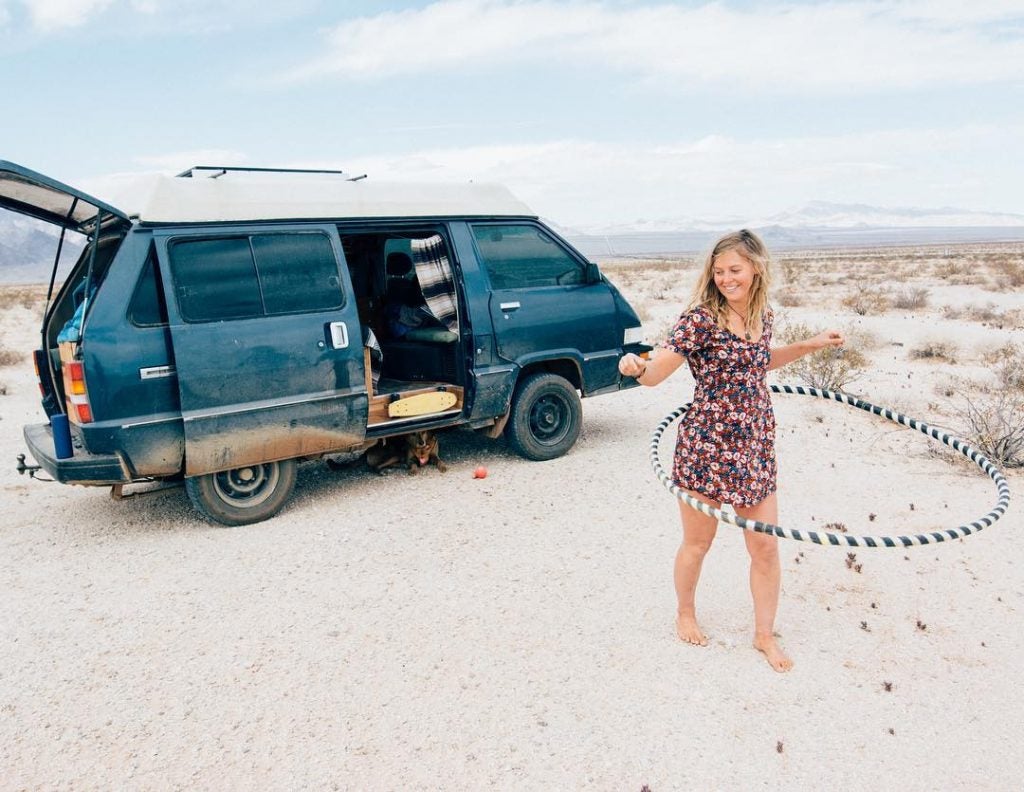Shari and Hutch return home to North Carolina to enjoy camping in the Blue Ridge Mountains among old growth forests.
We just had to get away, as far away as possible. Leaving our careers and a comfortable house behind 5 ½ years ago was a promise to explore far from our home in the Blue Ridge Mountains.
It wasn’t that we didn’t live in a beautiful place or that we’d done everything there, explored every trail, paddled every river, drank every microbrew. We simply needed a change. A big change.
It’s been nearly two years since we’ve been back through Boone, NC, (where we pay our taxes, register our vehicles, and vote). Each time we’ve returned, we’ve discovered that much about our “home,” just like ourselves, has changed. Many important things, thankfully, remain the same.
Camping in the Blue Ridge Mountains of North Carolina
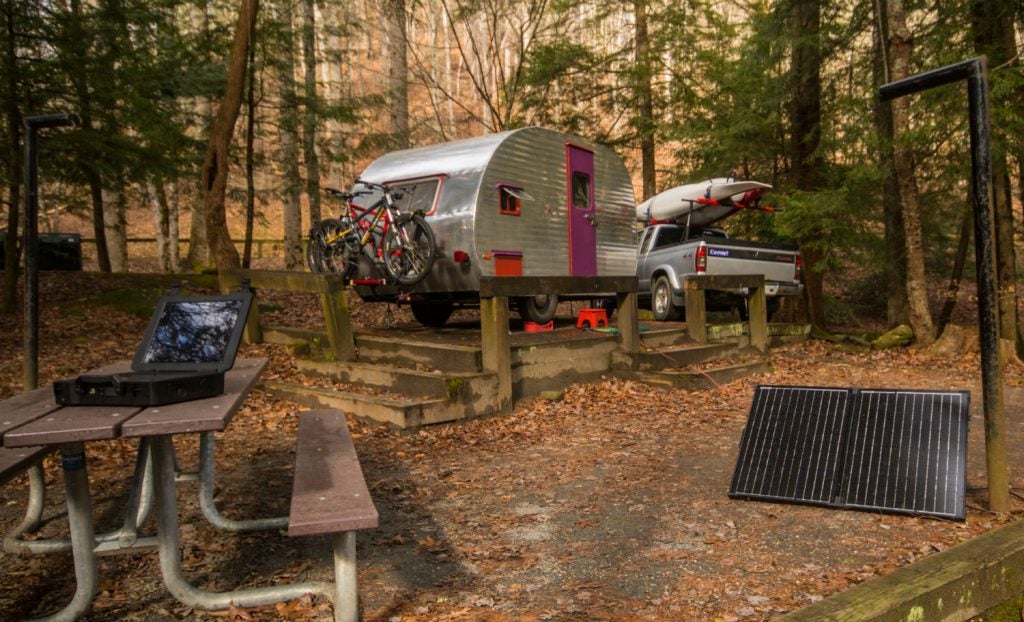
Charging up at Lake Santeetlah
Returning to Boone means returning to the familiar – friends, family and favorite eateries (which could be its own blog post.) It also means an opportunity to discover what we don’t know about our own backyard and see the area anew – as if for the first time. Over the past 80K miles and 49 states, we’ve gotten good at feeling our way to those “green” areas on the map which promise so much more than an inexpensive campsite.
After finishing a presentation at Western Carolina University, we headed out to the Nantahala National Forest, close to the Great Smoky National Park, for a few days of nature therapy. With no plan and no reservations, we stayed for 9 days in two different camps, Horse Cove Campground and a free, dispersed site along Lake Santeetlah.
This beautiful reservoir lies in the south western corner of the state – the part which doesn’t usually fit on the Rand McNally atlas 2-page NC spread. For outdoor adventure and camping lovers this area has much to offer.
Old Growth Trees at Joyce Kilmer Memorial Forest
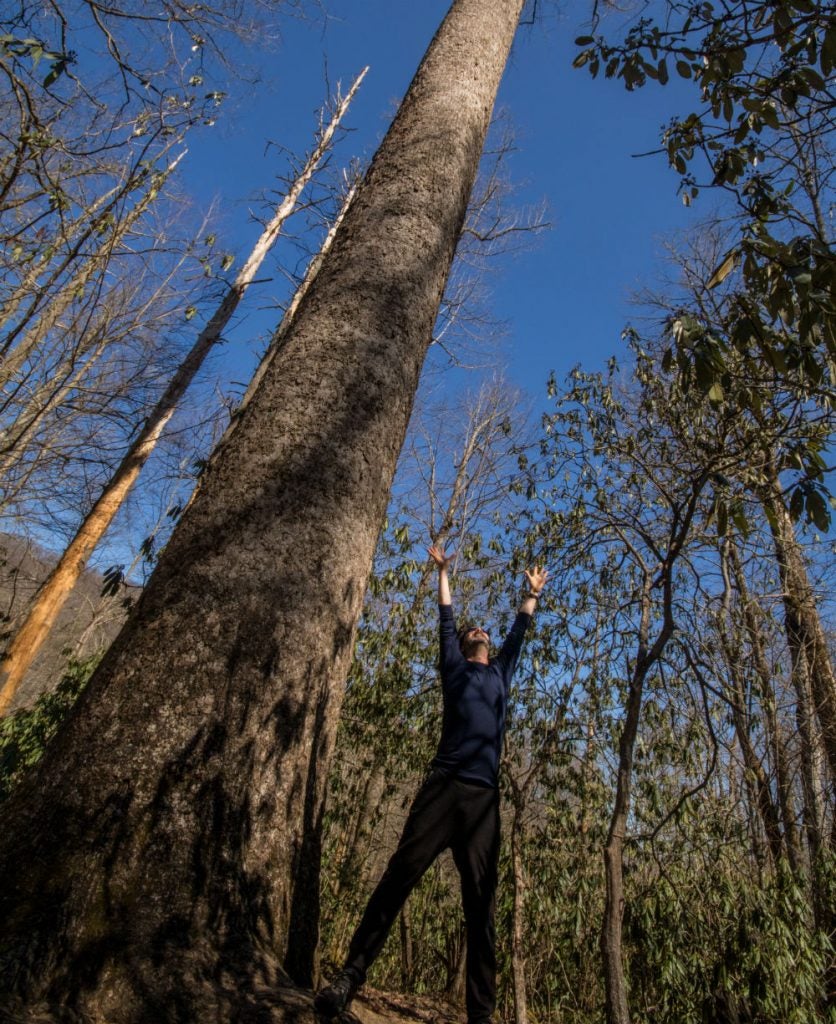
Let’s start with the last remaining track of “old growth” forest this side of the Mississippi, Joyce Kilmer Memorial Forest. Seeing this area with its massive trees, some as old as 400 years, is both an inspiration and a monument to the past. While lacking the circumference of Sequoias or the height of Redwoods, these ancient hardwood sentinels resemble their west coast relatives in shape at least. Their straight, scar free trunks rise 50 feet or so before a tight crown of branches reaches for the sky. The canopy must be thick in summer, because the understory remains sparse and hardly any Rhododendron grows here – highly unusual for the woods of these mountains.
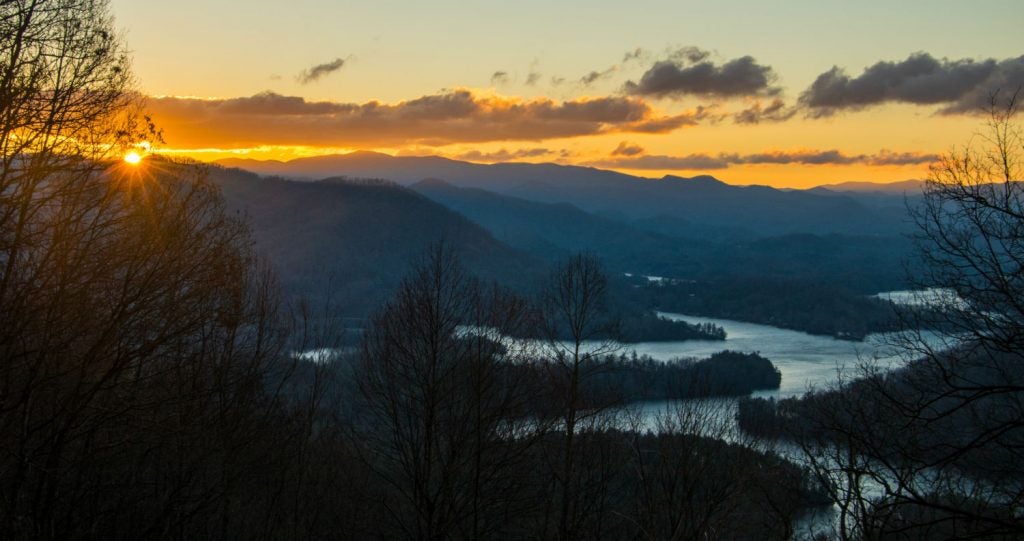
Sunset over Lake Santeetlah
This is the southern Appalachian forest as it was before the industrial revolution’s hunger for lumber cut it all down. The only reason this area was spared was due to dumb luck — the owners went out of business before the axe fell. Eventually, some good folks and the National Forest Service realized that this was the only place left uncut and protected it. There is a 2-mile nature trail through the memorial grove, in addition to others which will take you into the heart of the backcountry which spans the NC / TN border.
The lake offers paddling and all kinds of water sports. A small portion of the lake shore is privately owned and there are more than a few trophy homes. These remain clustered in one area of the lake and it is easy to avoid and enjoy the remote feel of the place.
The Cheoah River flows into and out of the lake offering some of the most sustained class III / IV whitewater in the southeast. Dam release weekends throughout the spring can be crowded as this river runs at capacity only a dozen or so times a year.
Hutch also took advantage of the two straight days of rain we had mid-week to jump on a short section of Santeetlah Creek which offered a short, but incredibly fun solo run in his creek boat.
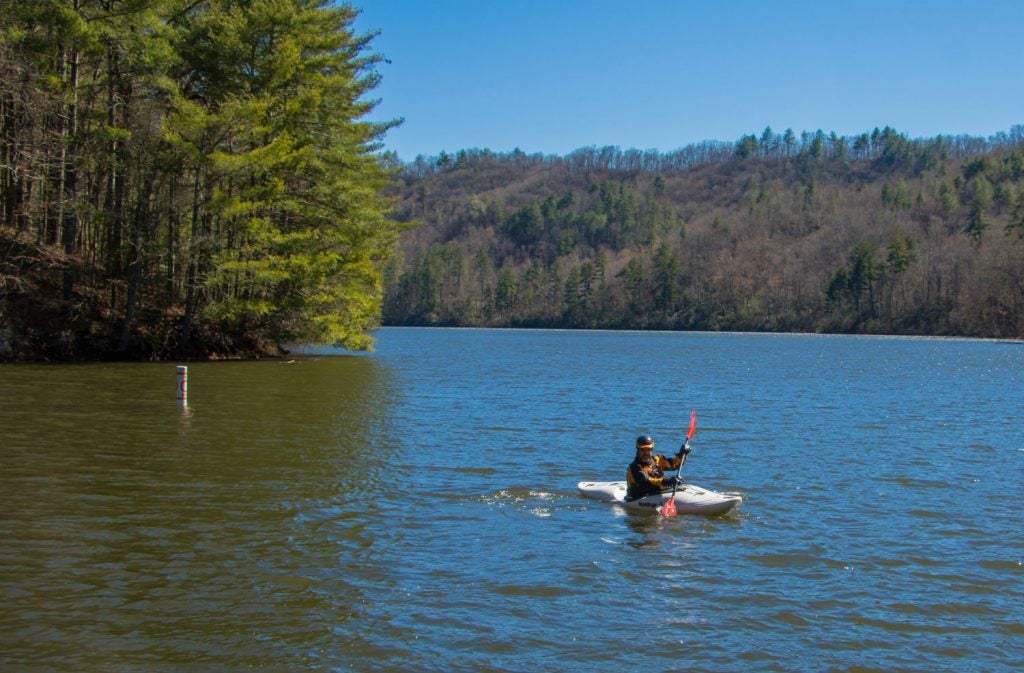
During the week which included the usual spring roller coaster of conditions, first summer warmth, then rain, then cold clear nights; we paddled in the sunshine, hiked on the mountainside, and huddled in our tiny home drinking hot cups of tea when the rains came. On the second day of rain, feeling a bit of cabin fever, we headed into town for some public library time to recharge batteries, get some work done, and grab some all-you-can-eat pizza buffet.
This is the kind of week we can have when we don’t make reservations, don’t make a plan. We are free to linger at our leisure and stay as long as our curiosity holds us. Our loose plan for the next few weeks is to continue to explore our extended backyard in the southeast, revisiting a few favorite places, but also seeing just what else is out there – from the mountains to the coast.
This tale of camping in the Blue Ridge Mountains is The Dyrt Magazine‘s second installment of Full-Time Campers. Read the first one here, and come back next week for more stories and advice from full-time campers Shari and Hutch. You can read even more about their life on the road at Freedom in a Can.
Full-Time Campers is powered by Renogy.
Related Campgrounds:
- Lake Keowee Campgrounds, Keowee-Toxaway State Park, SC
- Grandfather Mountain Camping, Linville, NC
- Dale Hollow Campground, Celina TN
Popular Articles:
Articles on The Dyrt Magazine may contain links to affiliate websites. The Dyrt receives an affiliate commission for any purchases made by using such links at no additional cost to you the consumer.

